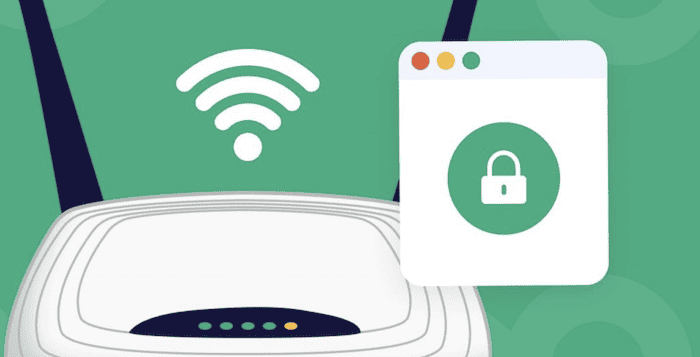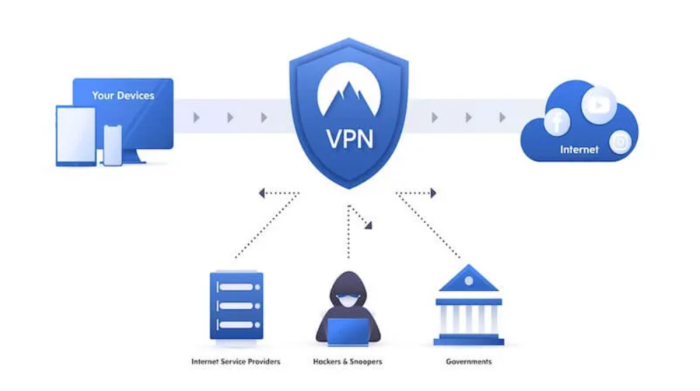Ever felt trapped by the digital walls of parental controls on WiFi? You’re not alone. This guide isn’t just about breaking free; it’s about understanding the balance between freedom and safety online. With the proper knowledge, bypassing these controls can be simple and safe.
Use a VPN to encrypt your internet connection, effectively hiding your online activities from parental controls. It’s quick, easy, and secure.
Keep reading to uncover the “how” and the “why” behind these strategies, ensuring you navigate the digital world responsibly.
Contents
- 1 Key Takeaways to Bypass Parental Controls
- 2 What are Parental Controls?
- 3 Standard Methods Used to Bypass Parental Controls
- 4 Tools and Technologies to Bypass Parental Controls on WiFi
- 5 FAQs
- 5.1 Can VPNs bypass all types of parental controls?
- 5.2 Are proxy sites safe for bypassing parental controls?
- 5.3 How do I discuss adjusting parental controls with my parents?
- 5.4 What are Gabb devices, and how do they relate to parental controls?
- 5.5 Is it legal to bypass parental controls using a VPN?
- 6 Conclusion
Key Takeaways to Bypass Parental Controls
- Bypassing parental controls needs to be done wisely. It’s not just about accessing what you want but understanding the implications.
- A VPN is your best friend for getting around WiFi restrictions. It keeps your online journey private and unrestricted.
- Communication with parents about internet use is crucial. Having an open dialogue is better than going behind their backs.
- Using Gabb devices? They’re designed for safety without the hassle of traditional parental controls. It’s worth considering for younger users.
- Remember, responsible internet use is critical. Bypassing controls should not lead to unsafe online behavior.
What are Parental Controls?
Parental controls are like digital guardrails. They help parents steer their kids away from the internet’s risky corners. Imagine a tool that can limit how long you’re online, block sites that aren’t kid-friendly, and even keep an eye on what apps you’re downloading. That’s parental control for you.
These controls can be set up on various devices—phones, tablets, computers, and gaming consoles. They work by filtering content, managing screen time, and sometimes tracking location to ensure safety. It’s not about spying; it’s about keeping kids safe in an increasingly online world.
Why do we need them? Well, the internet is vast. It’s filled with knowledge, but it’s also loaded with stuff not suitable for all ages. Parental controls help in creating a balanced online experience. They ensure that kids and teens can explore, learn, and play without stumbling into the internet’s less savory parts.
But it’s not just about blocking content. Parental controls can also help manage screen time, which is super important. Too much screen time can affect sleep, homework, and even relationships. By setting limits, parents can help ensure their kids develop healthy digital habits.
Interestingly, these controls have evolved. They’re now more sophisticated, offering customized settings for different ages and needs. Some even provide reports to parents about online activities, fostering conversations about digital privacy and responsible internet use.
Standard Methods Used to Bypass Parental Controls
Here are some of the methods you can use to bypass parental controls on WiFi
Use VPNs to get around Parental Control on WiFi.
One popular method to bypass parental controls is through VPNs (Virtual Private Networks). VPNs create a private, encrypted tunnel for your internet traffic. Whatever you do online goes through this tunnel, hidden from anyone outside, including parental control filters.
Why does this work? Because when you’re using a VPN, your actual IP address is masked. The websites you visit can’t see it, nor can the parental controls be set up on your WiFi. It’s like you become a digital ghost, able to browse through the internet without leaving a trace that parental controls can detect.
VPNs are straightforward to use. You download a VPN app, choose a server to connect to, and your online activity is encrypted. This encryption makes it challenging for parental controls to see and block your internet usage. Whether you’re trying to access a game or social media or just browse without restrictions, a VPN can get you there.
But it’s not just about getting around blocks. VPNs also protect your digital privacy. They keep your online actions hidden from prying eyes, which is crucial in today’s world, where data breaches and privacy concerns are rampant.
However, using a VPN to bypass parental controls should be done thoughtfully. It’s essential to understand why those controls were in place to begin with. They’re usually there to keep you safe from harmful content or to ensure you’re not spending too much time online.
Proxy Sites
Another standard method to navigate around parental controls is through proxy sites. These websites act as a middleman between your browser and the internet. When you use a proxy site, you send your internet requests to the proxy, which then forwards them to the final destination. This process helps mask your activities from the parental controls on your WiFi.
Why do people use proxy sites? They’re incredibly user-friendly. You don’t need to download anything or change your network settings. Just visit the proxy website, type in the URL you want to access, and you’re there. It’s a quick fix for accessing restricted content without directly confronting parental controls.
Proxy sites work differently because they hide your IP address, similar to VPNs, but without the encryption. This means that while your home network sees you’re connected to a proxy site, it doesn’t know what you’re doing on that site. Whether watching videos, browsing social media, or reading content, proxy sites can get you there when direct access is blocked.
However, there’s a catch. While proxy sites can offer a temporary solution for bypassing restrictions, they don’t provide the same level of privacy and security as VPNs. Since the connection isn’t encrypted, it’s easier for others to intercept your data if they’re looking. This means sensitive information could potentially be at risk.
Moreover, not all proxy sites are created equal. Some might be set up with malicious intent to capture your data or inject malware onto your device. Therefore, it’s crucial to use reputable proxy sites and be mindful of the information you access.
Tools and Technologies to Bypass Parental Controls on WiFi
Here are some of the Tools and Technologies you can use to Bypass Parental Controls on WiFi:
VPN Services
In bypassing parental controls, VPN services stand out as a prime tool. They not only help in evading restrictions but also bolster your digital privacy. Among the plethora of options, Surfshark and AtlasVPN shine bright for their unique features tailored to navigate parental controls effectively.
Surfshark offers a camouflage mode that makes your VPN traffic look like regular internet traffic. This is especially handy when you want to keep your use of a VPN discreet. With Surfshark, you also get the benefit of connecting unlimited devices. This means you can maintain your privacy across all your gadgets, from your smartphone to your laptop, without extra costs.
AtlasVPN, on the other hand, emphasizes encrypted connection and speed. It ensures that your internet activities remain a fortress, impervious to prying eyes, including those parental controls. Additionally, AtlasVPN’s safe browse feature blocks malicious websites, adding an extra layer of safety as you navigate the internet.
Both these VPN services offer ad blockers, which enhance your browsing experience by eliminating annoying ads and potentially harmful malware. They represent a blend of freedom and security, providing a robust solution for bypassing parental controls while maintaining responsible internet use.
Gabb Devices
In a digital age where parental controls and screen time management are daily conversations, Gabb devices emerge as a pioneering solution. Specifically designed for kids and teens, these devices offer a unique approach to digital safety, sidestepping the need for traditional parental controls.
Gabb devices, including the Gabb Phone, Gabb Watch, and the more advanced Gabb Phone 3 Pro, are engineered with simplicity and safety. They come with no app store, eliminating the risk of downloading potentially harmful apps or accessing inappropriate content. This built-in limitation means parents don’t worry as much about what their children are exposed to online.
What sets Gabb devices apart is their focus on essential communication. The phones allow for calls and texts but lack the features that typically lead to excessive screen time, such as social media apps or games. This design philosophy encourages kids to use their devices for communication and learning purposes, fostering responsible internet use from a young age.
Furthermore, the Gabb Watch serves as a communication tool and includes features like GPS tracking. This adds an extra layer of ease for parents, knowing they can keep tabs on their child’s location without exposing them to internet risks.
FAQs
Can VPNs bypass all types of parental controls?
Yes, VPNs can bypass most parental controls by encrypting your internet traffic, ensuring private and unrestricted access to the web, and enhancing your digital privacy.
Are proxy sites safe for bypassing parental controls?
While proxy sites can provide access to restricted content, they vary in safety. Always choose reputable proxies to protect your internet safety and digital privacy.
How do I discuss adjusting parental controls with my parents?
Openly talk about your internet use, express your needs respectfully, and suggest a compromise that balances freedom and safety online.
What are Gabb devices, and how do they relate to parental controls?
Gabb devices offer a controlled way for kids to enjoy digital benefits without strict parental controls, promoting responsible internet use.
Is it legal to bypass parental controls using a VPN?
Using a VPN is legal in most places, but bypassing parental controls should be discussed with parents to ensure ethical internet use.
Conclusion
In this digital era, understanding how to get around parental controls on WiFi is just one piece of the puzzle. The real challenge lies in balancing the quest for freedom with the responsibility of safe internet use. VPN services and proxy sites can offer temporary gateways to unrestricted content but come with risks and ethical considerations.
Tools like Gabb devices present safer alternatives for younger users, emphasizing the importance of digital well-being. Ultimately, open communication between parents and children about digital privacy, responsible internet use, and the purpose behind parental controls is key to navigating the online world wisely and ethically.
You can always find me with a cup of coffee Googling anything and everything related to the networking. Refer to our detailed How-To Guides on wifi routers and never face any issue with router again!

